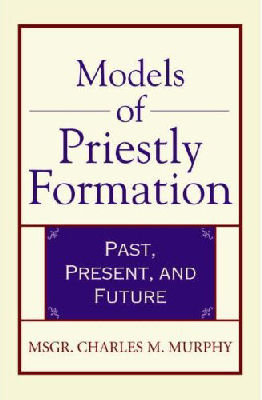
|
Posted October 30, 2006
Book: Models of Priestly Formation: Past, Present and Future Author: Msgr. Charles M. Murphy A Herder and Herder Book, New York, 2006. Pp. 94 An Excerpt from the Jacket:
An Excerpt from the Book: An active and committed Catholic layman who graduated from the U.S. Military Academy at West Point lamented to me that some priests he knew had shared with him that after seminary they did not feel they possessed the necessary competence and self-assurance to accomplish what they wanted in the priesthood. West Point graduates seemed to him better endowed with the discipline of life and skills required for their profession. What he was pointing out is perhaps a return to the discipline and the elan of Tridentine seminaries, for all their limitations, would be helpful today. I saw some of that firsthand when I visited the Redemptoris Mater Archdiocesan Missionary Seminary in Kearny, New Jersey. The days in the seminary are very structured and very busy. Teamwork in everything is the standard mode of operation. A rigorous simplicity of life was the norm, and obedience to the orders of the superiors to bring the Gospel anyplace in the world was the expectation. In an insightful article on priestly formation and the new ecclesial movements, Ian Ker, a Newman scholar, makes the point that the program of reform laid out by the Council of Trent would never have gotten off the ground without the aid of the new charism of the Jesuits and Ignatian spirituality. In parallel fashion, he contends, the reform of the Second Vatican Council at this point in history over forty years since the council’s conclusion seems to be taking shape through the new charism embodied in movements such as the Neocatechumenal Way. Just as in the sixteenth century the Jesuits provided a model for the kind of secular priesthood that the Trindentine Church called for, so too in our day the ecclesial movements and communities, by concretely realizing the ecclesiology of Vatican II, are putting before the church a model of Christian communion in which the different parts of the church form an oganic and mutually supportive unity. Indeed, to use the pope’s own words, they will help to show the rest of the church how “the church itself is a movement.” The greatest implication of this overview of seminary formation is that there is a necessary organic linkage between the seminary and the local church. The good health of both depends on it. Table of Contents: 1. The creation of the seminary 2. The seminary in France: a milieu for spiritual and pastoral formation 3. The call of the Second Vatican Council: a priestly formation more rooted in the church community and its mission to the world. 4. The seminary of the Neocatechumenal Way: Conversion, community, mission 5. The new foundation of a diocesan seminary in Paris |
|
